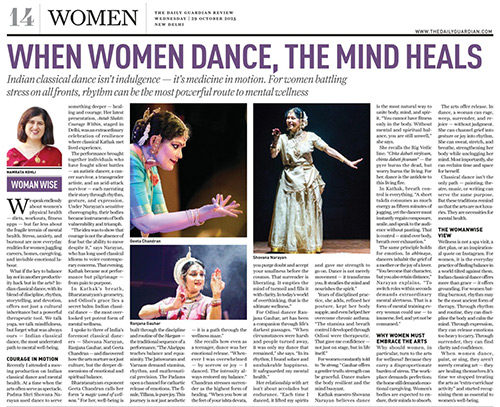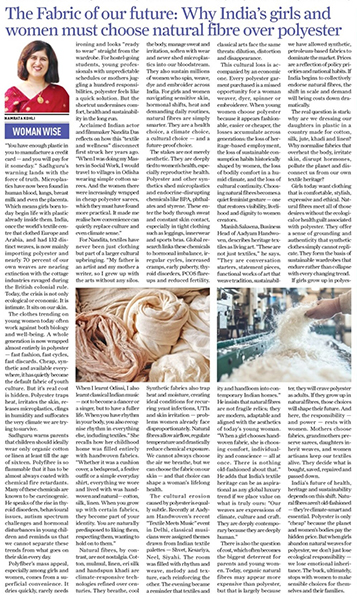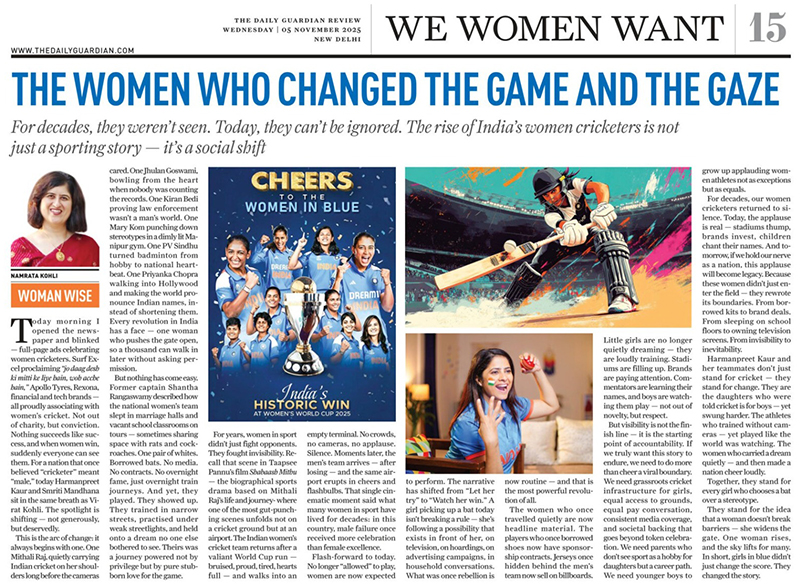Indian classical dance isn’t indulgence — it’s medicine in motion. For women battling stress on all fronts, rhythm can be the most powerful route to mental wellness
We speak endlessly about women’s physical health — diets, workouts, fitness apps — but far less about the fragile terrain of mental health. Stress, anxiety, and burnout are now everyday realities for women juggling careers, homes, caregiving, and invisible emotional labour.
What if the key to balance lay not in another productivity hack but in the arts? Indian classical dance, with its blend of discipline, rhythm, storytelling, and devotion, offers not just a cultural inheritance but a powerful therapeutic tool. We talk yoga, we talk mindfulness, but forget what was always ours — Indian classical dance, the most underrated path to mental well-being.
Courage in Motion
Recently I attended a moving production on Indian classical dance and mental health. At a time when the arts often serve as spectacle, Padma Shri Shovana Narayan used dance to serve something deeper — healing and courage. Her latest presentation, Antah Shakti: Courage Within, staged in Delhi, was an extraordinary celebration of resilience where classical Kathak met lived experience.
The performance brought together individuals who have fought silent battles — an autistic dancer, a cancer survivor, a transgender artiste, and an acid-attack survivor — each narrating their story through rhythm, gesture, and expression. Under Narayan’s sensitive choreography, their bodies became instruments of both vulnerability and triumph.
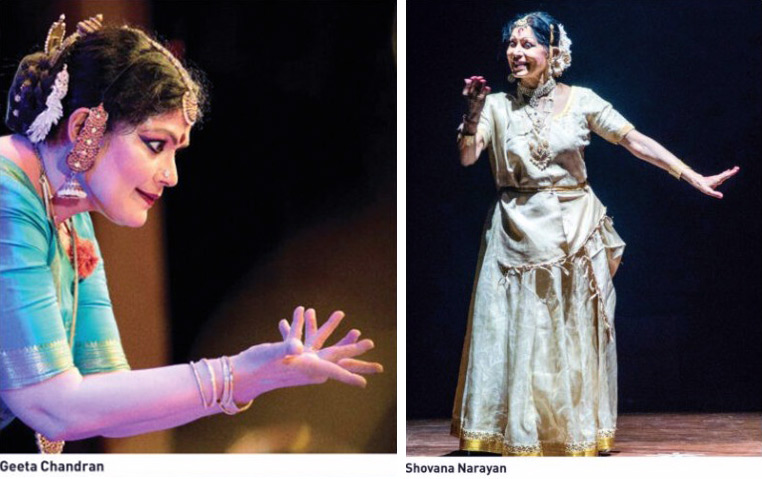
“The idea was to show that courage is not the absence of fear but the ability to move despite it,” says Narayan, who has long used classical idioms to voice contemporary concerns. That evening, Kathak became not performance but pilgrimage — from pain to purpose.
In Kathak’s breath, Bharatanatyam’s geometry, and Odissi’s grace lies a secret balm: Indian classical dance — the most overlooked yet potent form of mental wellness.
I spoke to three of India’s foremost classical dancers — Shovana Narayan, Ranjana Gauhar, and Geeta Chandran — and discovered how the arts nurture not just culture, but the deeper dimensions of emotional and spiritual balance.
Bharatanatyam exponent Geeta Chandran calls her form “a magic wand of wellness.” For her, well-being is built through the discipline and routine of the Margam — the traditional sequence of a performance. “The Alarippu teaches balance and equanimity. The Jatiswaram and Varnam demand stamina, rhythm, and mathematical precision. The Padams open a channel for cathartic release of emotions. The finale, Tillana, is pure joy. This journey is not just aesthetic — it is a path through the wellness maze.”
She recalls how even as a teenager, dance was her emotional release. “Whenever I was overwhelmed — by sorrow or joy — I danced. The intensity always restored my balance.” Chandran stresses surrender as the highest form of healing. “When you bow at the feet of your ishta devata, you purge doubt and accept your smallness before the cosmos. That surrender is liberating. It empties the mind of turmoil and fills it with clarity. In today’s world of overthinking, that is the ultimate wellness.”
For Odissi dancer Ranjana Gauhar, art has been a companion through life’s darkest passages. “When circumstances were harsh and people turned away, it was only my dance that remained,” she says. “In its rhythm, I found solace and unshakeable happiness. It safeguarded my mental health.”
Her relationship with art isn’t about accolades but endurance. “Each time I danced, it lifted my spirits and gave me strength to go on. Dance is not merely movement — it transforms you. It steadies the mind and nourishes the spirit.”
Years of disciplined practice, she adds, refined her posture, kept her body supple, and even helped her overcome chronic asthma. “The stamina and breath control I developed through Odissi were therapeutic. That gave me confidence — not just on stage, but in life itself.”
For women constantly told to “be strong,” Gauhar offers a gentler truth: strength can be graceful. Dance makes the body resilient and the mind buoyant.
Kathak maestro Shovana Narayan believes dance is the most natural way to unite body, mind, and spirit. “You cannot have fitness only in the body. Without mental and spiritual balance, you are still unwell,” she says.
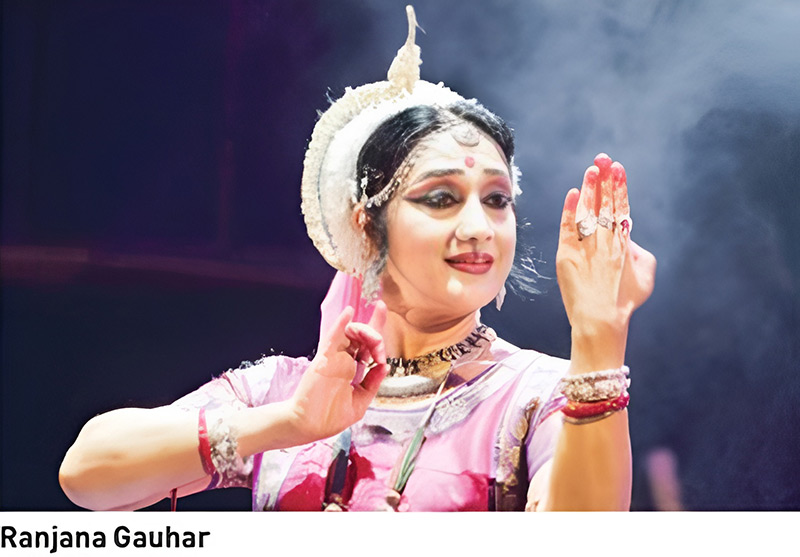
She recalls the Rig Vedic line: “Chita dahati nirjīvam, chintā dahati jīvanam” — the pyre burns the dead, but worry burns the living. For her, dance is the antidote to this living fire.
In Kathak, breath control is everything. “A short tukda consumes as much energy as fifteen minutes of jogging, yet the dancer must instantly regain composure, smile, and speak to the audience without panting. That is control — mind over body, breath over exhaustion.”
The same principle holds for emotion. In abhinaya, dancers inhabit the grief of a mother or the joy of a lover. “You become that character, but you also retain distance,” Narayan explains. “To switch roles within seconds demands extraordinary mental alertness. That is a form of mental training every woman could use — to immerse, feel, and yet not be consumed.”
Why Women Must Embrace the Arts
Why should women, in particular, turn to the arts for wellness? Because they carry a disproportionate burden of stress. The workplace demands perfection; the home still demands emotional caregiving. Women’s bodies are expected to endure, their minds to absorb.
The arts offer release. In dance, a woman can rage, weep, surrender, and rejoice — without judgment. She can channel grief into gesture or joy into rhythm. She can sweat, stretch, and breathe, strengthening her body while unclogging her mind. Most importantly, she can reclaim time and space for herself.
Classical dance isn’t the only path — painting, theatre, music, or writing can serve the same purpose. But these traditions remind us that the arts are not luxuries. They are necessities for mental health.
The WomanWise View
Wellness is not a spa visit, a diet plan, or an inspirational quote on Instagram. For women, it is the everyday practice of finding balance in a world tilted against them. Indian classical dance offers more than grace — it offers grounding. For women battling burnout, rhythm may be the most ancient form of therapy. Through rhythm and routine, they can discipline the body and calm the mind. Through expression, they can release emotions too heavy to carry. Through surrender, they can find clarity and confidence.
When women dance, paint, or sing, they aren’t merely creating art — they are healing themselves.It’s time we stopped treating the arts as “extra-curricluar activity” and started recognising them as essential to women’s well-being.


